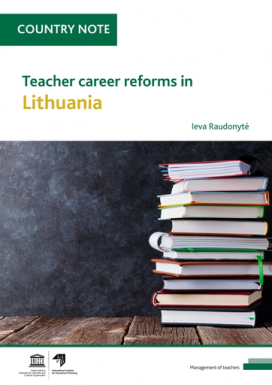
Online version
About the publication
Since 1991, Lithuania has established a teacher career model based on both a single-salary schedule and a two-pronged career ladder consisting of paths for advanced teacher positions and management options. The career ladder allows for vertical and horizontal mobility, with teachers progressing to a higher level after completing a requested evaluation process. While teachers seem generally satisfied with the model, several noted hindrances have emerged, including issues with the structural framework, the evaluation process, and the professional development opportunities. This country note was conducted within the framework of an international research project on teacher careers implemented by the UNESCO International Institute for Educational Planning (IIEP). It analyses the teacher career structure in Lithuania while also considering related implementation challenges and their effects on teachers. Furthermore, it demonstrates how reforms linked to teacher careers need to consider a broader context of challenges that teachers face, including low salaries and the limited number of initial job vacancies upon graduation from training.









